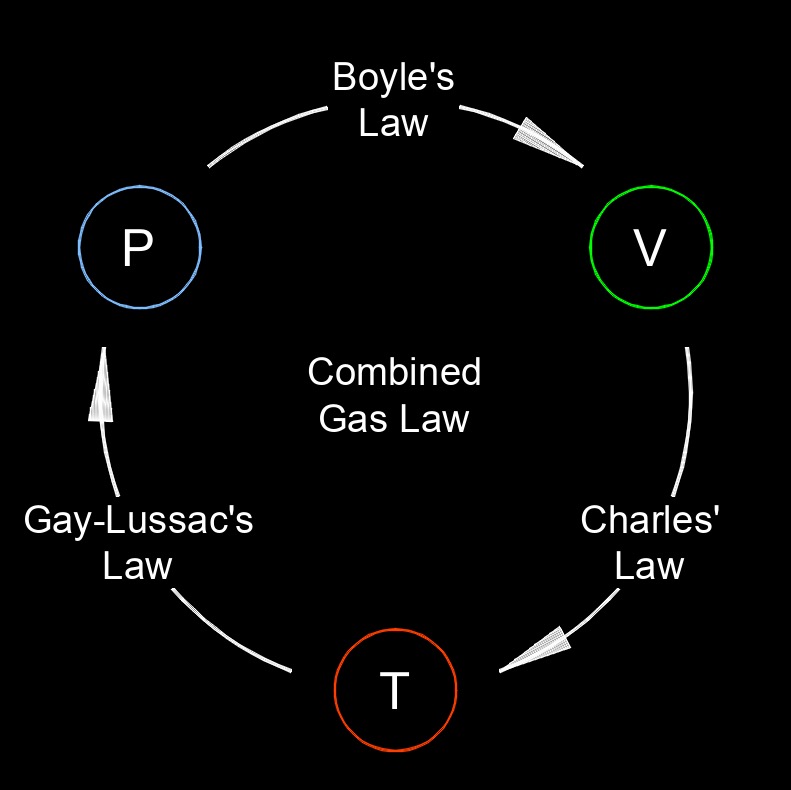Charles' Law
Charles' Law Formula |
||
| \( \dfrac{V_i}{T_i} \;=\; \dfrac{V_f}{T_f} \) or \( \dfrac{V_f}{V_i} \;=\; \dfrac{T_f}{T_i} \) or \(\ V_i \cdot T_f \;=\; V_f \cdot T_i \) | ||
| Symbol | English | Metric |
| \( V_i \) = Initial Volume | \(ft^3\) | \(m^3\) |
| \( T_i \) = Initial Temperature | \(^\circ F\) | \(^\circ C\) |
| \( V_f \) = Final Volume | \(ft^3\) | \(m^3\) |
| \( T_f \) = Final Temperature | \(^\circ F\) | \(^\circ C\) |
 Charles' law, also known as the law of volumes, one of the gas laws, it states that at a constant pressure, the volume of a given mass of gas is directly porportional, increases or decreases, to the absolute temperature. This gas law that describes the relationship between the volume of a gas and its absolute temperature, assuming constant pressure and amount of gas.
Charles' law, also known as the law of volumes, one of the gas laws, it states that at a constant pressure, the volume of a given mass of gas is directly porportional, increases or decreases, to the absolute temperature. This gas law that describes the relationship between the volume of a gas and its absolute temperature, assuming constant pressure and amount of gas.
The relationship described by Charles' law means that as the temperature of a gas increases, its volume increases proportionally, and vice versa. This relationship holds true as long as the pressure and amount of gas remain constant. Charles' law can be derived from the ideal gas law, which combines several gas laws into a single equation, taking into account pressure, volume, temperature, and the number of gas molecules. However, Charles' law specifically focuses on the relationship between volume and temperature at constant pressure.
Charles' law has important applications in various fields, including thermodynamics, engineering, and everyday life. It is used to explain phenomena such as the expansion of gases with increasing temperature, the operation of gas filled containers and balloons, and the behavior of gases in heating and cooling processes.

